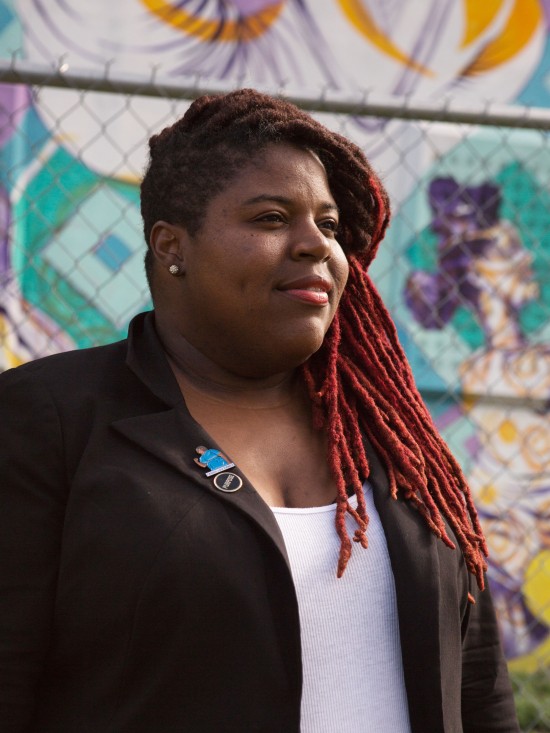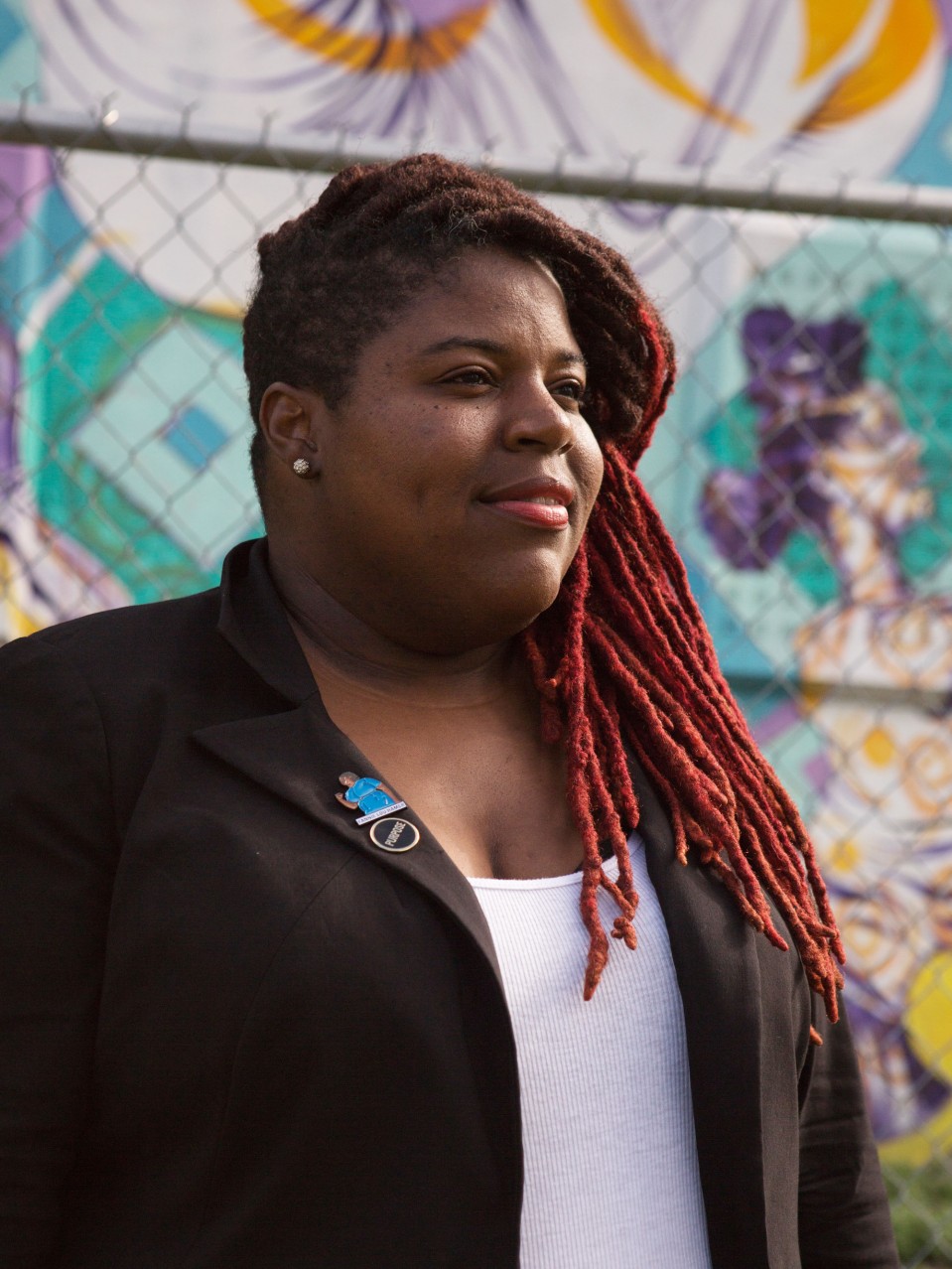Climate Change
What one woman’s quest to save her neighbors reveals about climate resilience
The weather will get worse, but that doesn’t mean disasters have to.



The call came three days before Hurricane Irma hit Miami.
An elderly woman, living in a local housing project and relying on a wheelchair for mobility, had no food, no water, and no emergency oxygen. On the other end of the line, Valencia Gunder, a community leader and activist, had nothing left to give. In the days before, Gunder had depleted her personal savings, buying emergency food and supplies for anyone who’d called asking for help. Now the grocery stores were barren and she had only $200 left, which she’d stowed away for the aftermath of the storm.
For most of 2017, Gunder had sat on the executive steering committee of Greater Miami’s 100 Resilient Cities initiative, an effort to shore up the region against the worsening effects of climate change. The committee had tried to make a plan to protect the most vulnerable— an estimated 30% of people in the area live below the poverty line, and twice as many struggle to make ends meet. But now Irma’s 180-mile-perhour (290-kilometer-per-hour) winds were ripping through the Caribbean, headed for South Florida, and Gunder knew their preparation wouldn’t be enough. “I was stuck,” she says, her voice cracking as she remembers the feeling of desperation. “That was it. That was the final straw. I was like, we have to do something.”
As wealthier residents booked last-minute flights to escape the storm, Gunder worked against the clock. She found an emergency shelter for the elderly woman and sent out a series of requests to other activists and community leaders. By the time her power cut out on the morning of Irma’s landfall, she had launched a social-media campaign and secured an empty warehouse to serve as headquarters for a grassroots post-hurricane relief operation.
In her adrenaline-fueled rush to save Miami’s poorest from devastation, she didn’t realize she’d laid the groundwork for a whole new way of building community resilience. That approach is now being adopted by cities around the US that, like Miami, are grappling with intensifying hurricanes, droughts, and floods.
The modern study of community disaster resilience has its roots in a devastating heat wave that struck Chicago in 1995. That July, temperatures approached 110 °F (43 °C) with severe humidity; 739 people died, making it the deadliest event of its kind in US history. City officials lamented it as a “unique meteorological event” whose human toll couldn’t have been avoided. But years later, when sociologist Eric Klinenberg revisited the mortality data, he drew entirely different conclusions that are now foundational to our understanding of how natural phenomena turn into natural disasters.
He discovered that two low-income minority communities had suffered opposing fates, though they were separated only by a major road. In one, the predominantly African-American North Lawndale, people had died at 10 times the rate of the other, the mostly Latino South Lawndale. The disparity, he realized, was a product of each community’s history. The city had neglected North Lawndale for years, and its local economy had declined in the face of sparse public services and investment. As employers, businesses, and residents abandoned the neighborhood, rates of violent crime skyrocketed. Many elderly residents were afraid to leave their un-air-conditioned homes, where they succumbed to heatstroke. South Lawndale, by contrast, was a hub for Mexican-American immigrants, whose population was constantly being replenished by new arrivals. This fueled local businesses and created a lively street scene that made elders feel safe to set out for air-conditioned businesses and facilities.
“Yes, the weather was extreme,” Klinenberg later said in an interview. “But the deep sources of the tragedy were the everyday disasters that the city tolerates, takes for granted, or has officially forgotten.”
Klinenberg’s findings taught experts and government practitioners that mitigating suffering is as much about building up the social health and economic stability of communities as it is about physical adaptation. A body of scholarship arose from that idea, and in 2018 the Urban Sustainability Directors Network, an organization focused on fostering innovation in cities, published a white paper on a new model for community-led “resilience hubs.”
A resilience hub, it said, was a physical location like a school, church, or community center that local residents could trust. In normal times, the hub would serve its usual function as well as offer resources like financial advice, job-seeking services, or evening classes. During a natural disaster, it would become an operations center for distributing emergency relief, or a temporary shelter for people who had to leave their homes.
The morning after Irma roared through, Gunder wasn’t thinking about resilience hubs. Ignoring the flooding in her own house, she met a small group of volunteers at the empty warehouse, which she dubbed the community emergency operations center, or CEOC. They pooled together the little money they had and went straight to any stocked grocery stores to buy hot dogs and buns. Then they dragged Gunder’s grill from her home to low-income neighborhoods, one by one.
Everything was chaos. Streets were flooded; windows were shattered; roofs had caved in from falling trees. Over two million homes and businesses lost power in South Florida, and tens of thousands would still be without it a week later. People who hadn’t eaten since before the storm lined up at Gunder’s makeshift food station in droves, confused by her generosity. A man who said he worked for the school board came up, sobbing and begging for food in exchange for labor. “This food is for everybody,” she had to reassure him. “We came to feed people for free.”
In the first two days, her team stretched their funds to feed around 400 people. But on the third day, as she watched the line of people grow in Overtown, a predominantly African-American neighborhood, she realized she needed more money. Overwhelmed by the scale of need, she called the Miami Foundation, a local nonprofit, and began to cry. Luckily, the foundation had been receiving donations to support the hurricane relief efforts, and it had worked with Gunder before. It wired her $10,000, completely changing the scope of her operation.
Every morning, she met with volunteers at the CEOC and formulated an action plan. Then they dispatched teams to set up a network of food stations across the low-income neighborhoods. In each neighborhood, the volunteers would split into two groups: one to grill and hand out food, the other to knock on doors to notify and check in on people. Both groups also collected data: how many people they fed, who needed medical attention, and basic demographics like the size and total income of each household. All that data was then funneled back to headquarters at the CEOC and compiled to identify hot spots of need. As word of what Gunder was doing spread through the press and social media, local governments, nonprofits, and other emergency response teams began calling to ask where to direct their aid and supplies.
The numbers spoke for themselves. In a week and a half, the CEOC had fed 23,000 people and revealed a completely new model for how to deliver resources efficiently to the most vulnerable communities.
Today, Miami is using the CEOC as a foundation for a resilience hub network. The 100 Resilient Cities steering committee is working with community leaders and nonprofits across the city’s neighborhoods to identify trusted spaces for the new hubs. In March, representatives from Miami and other cities around the country—including Washington, DC; Providence, Rhode Island; and Ann Arbor, Michigan—met to learn from one another’s efforts.
For Gunder, all this is just the beginning. Her face glows when she talks about the new hub network, but her mind races impatiently to what comes after. She dreams of a day when the neighborhoods she’s worked with will finally shed their poverty and blossom to their full potential. “I know that even though these communities have all of these social ills, they embody this beautiful resiliency,” she says. “It just takes a little bit of guidance and searching to find.”